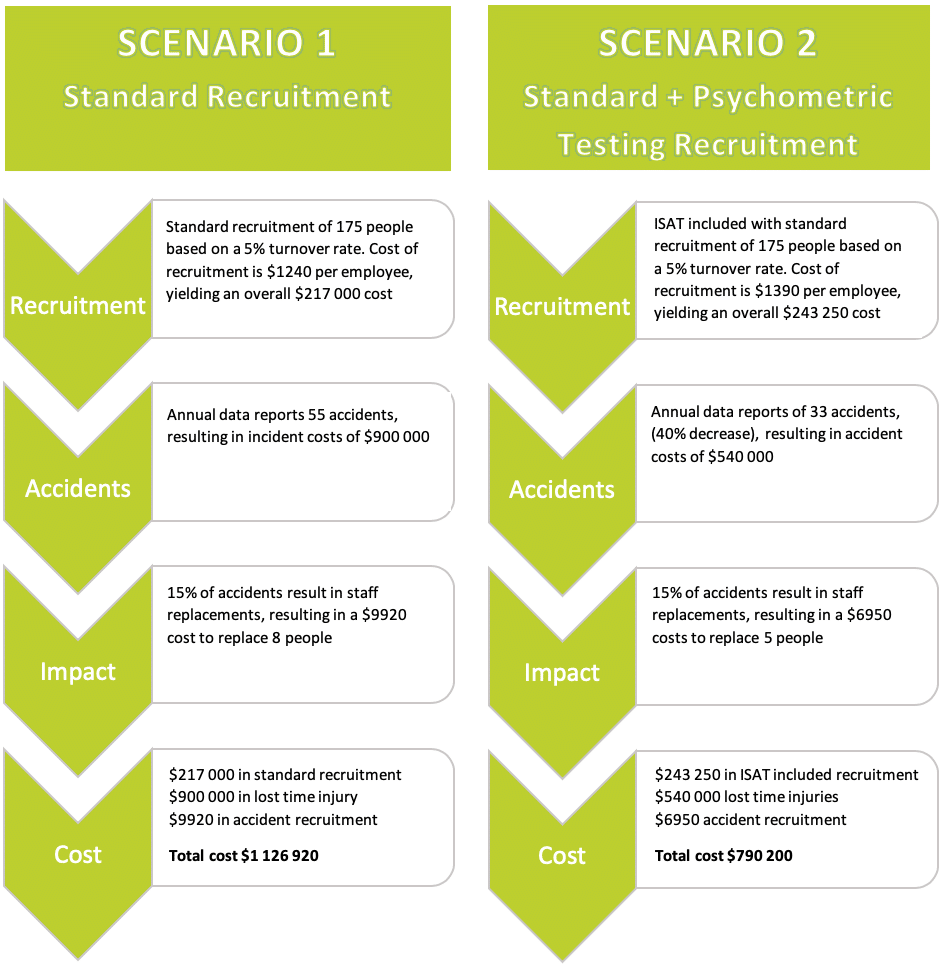Part Three: Psychometric Testing – Sample Return on Investment (ROI) Case Study

Part Two of our Return on Investment (ROI) of psychometric testing series provided you with a formula you can use to work out whether the use of psychometric testing would be beneficial for your organisation.
How to calculate ROI of psychometric testing
Part Three provides a practical work up of calculating the ROI of psychometric testing. In this example, the organisation is evaluating the success of their recruitment process with and without the use of one psychometric test (in this case the ISAT).
Background and practical example
We’ve used a practical example applying the ROI formula identified in part two of our series. We’ve focussed on a company Minions Electrical.
Sample case study: Minions Electrical
Minions is a large electrical company currently employing 3500 employees, their staff turnover rate is estimated at 5% per annum. At present, it is estimated that turnover is costing Minions approximately $1240 per candidate.[1] In 2015, Minions reported 55 accidents which were estimated to cost $900 000. These costs were attributed to replacement staff, production and productivity losses, personal injury claim compensation, repair bills and travel expenses. It is acknowledged most of these accidents were a result of an interplay of various factors including poor safety procedures, however human factors were involved in 80-90% of the accidents. Minions has estimated approximately 15% of these accidents result in at least one employee’s long-term absenteeism, requiring new staff to be recruited and retrained. This cost is in addition to Minions recruitment of their standard staff turnover. Minions does not currently use psychometric testing to assess safety attitudes and behaviours.
The following scenarios outline two alternate recruitment processes and demonstrate how psychometric testing can affect overall cost savings.
Scenario 1 is a standard recruitment approach of resume screening, interviews and reference checking.
Scenario 2 utilises the Individual Safety Attributes Test (ISAT) in addition to this standard approach.
Standard Recruitment vs Standard + Psychometric Testing recruitment

Summary
As shown in the comparison above, by utilising the ISAT to screen candidate’s safety attitudes as a basis for selection, Minions could save $336,720 by decreasing accidents resulting from poorly selected candidates.
At People Solutions, we’ve been conducting psychometric assessments since 1999. Contact our team today to discuss how psychometric assessments can dramatically impact your bottom line.
Part One
Part One of this series kicked off the topic of whether psychometric testing can bring a return on investment.
Part Two
Will provide you with a formula you can use to determine if psychometric testing will provide your organisation with a ROI.



